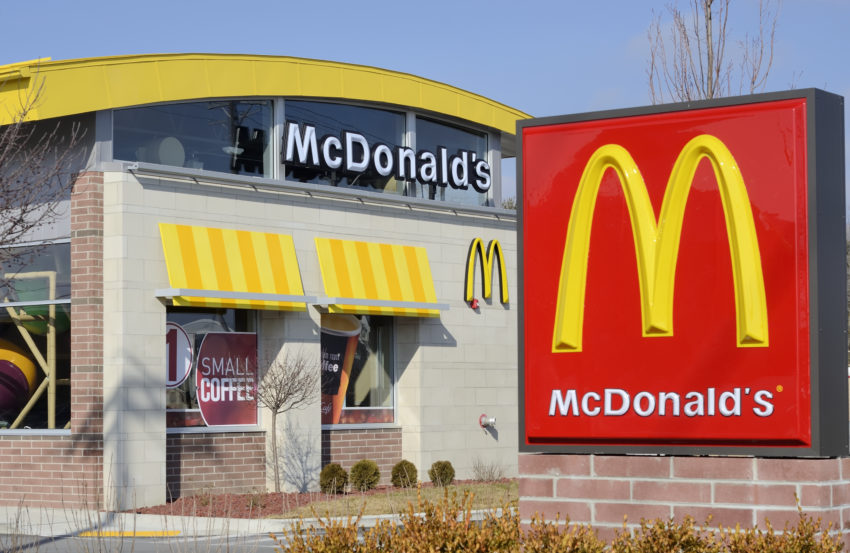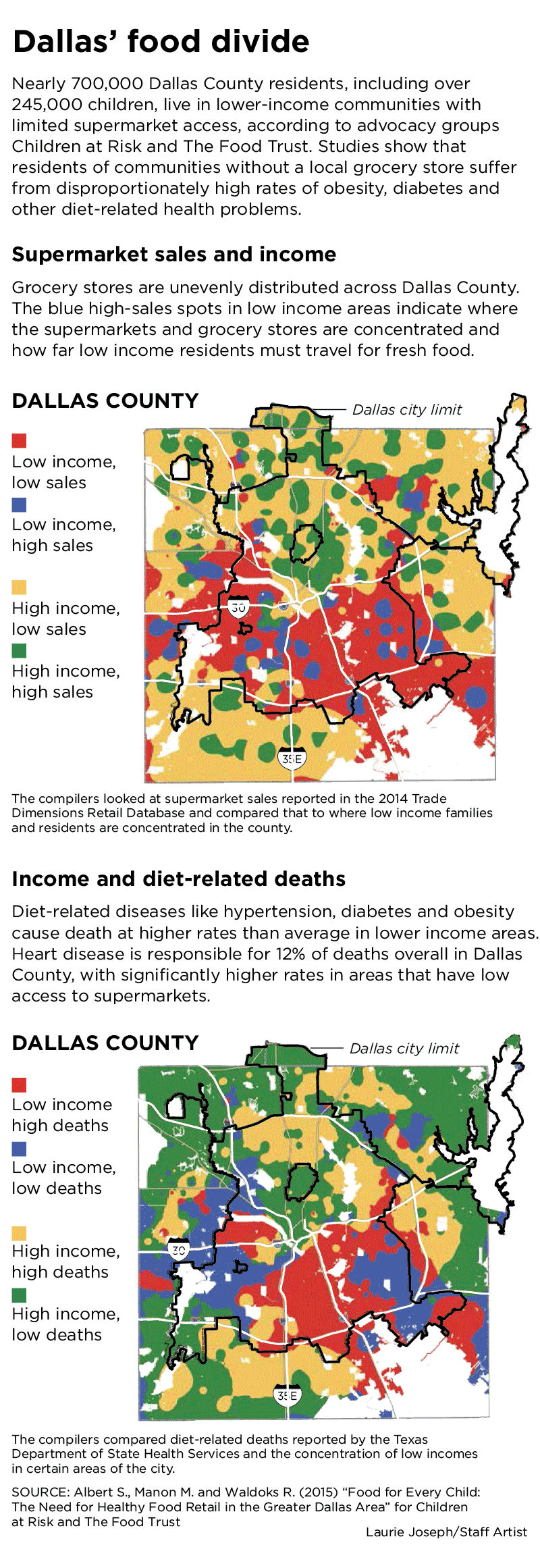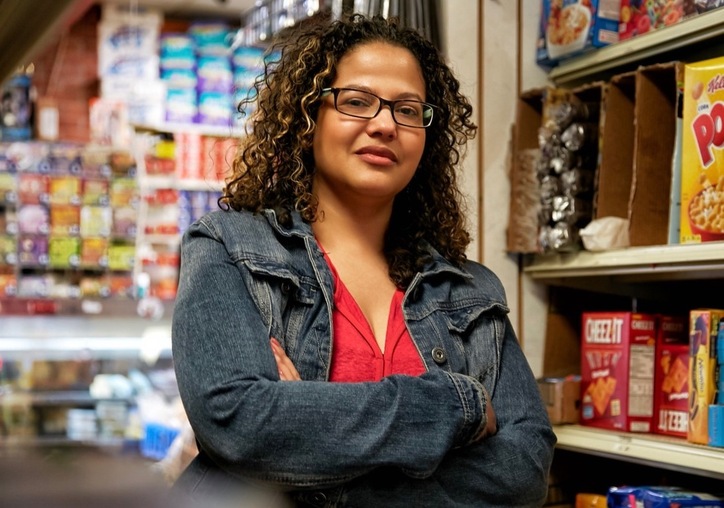
Share On Social!
Food swamps cover large parts of the Dallas area.
In fact, almost 700,000 Dallas County residents—including more than 245,000 children—live in low-income communities with limited supermarket access, according to a Dallas Morning News report.
Food Swamps & Latinos
We already know that food deserts and food swamps are making low-income Latinos obese. 
A food desert is an area more than 2 miles or 15 minutes away from a grocery store. A food swamp includes a food desert and a high-density of stores and restaurants that offer high-calories fast food and junk food, relative to healthier food options.
It can be hard for Latina mothers to navigate food swamps.
For Dallas’ Latino and black populations in areas like Pleasant Grove, Oak Cliff, and East Dallas, food environments are influencing their long-term health outcomes.
Food Swamps & Big D
Unhealthy eating is the nation’s top cause of risk for death.
In Dallas County, diet-related diseases—high-blood pressure, heart disease, diabetes, and obesity—cause higher death rates than those in lower-income areas, according to a needs assessment.
12% of deaths in Dallas County were due to heart disease.
The rates were significantly higher in food swamps.
Jenny Eyer is a Dallas native and director of the Center for Child Health, Research and Policy. Eyer said she only became familiar with food swamps due to her research on food deserts.
“If you walk or drive down a main road in a ZIP code that’s considered a food desert, more often than not, you’re going to pass by five or six fast-food restaurants,” Eyer told Dallas Morning News. “The only options for these families looking for something to eat are these fast-food options, whether it be a quick hamburger or fried chicken or other greasy options.”
Drexel University researcher Dr. Alexander Ortega noted food swamps’ impact on Latinos.
It could ironically be second-generation Latinos’ upward socioeconomic mobility that makes them be less physically active and gravitate to unhealthy foods.
“More recent immigrants generally are involved in jobs that require some physical activity,” Ortega told Dallas Morning News. “But the longer you stay and become more upward mobile, you become less physically active and that increases your risks of dealing with cardiovascular disease and certain cancers.”
The CDC reports that second-generation Latino immigrants are not like their foreign-born parents, who are expected to live two years longer than non-Latino whites. Instead, they are expected to die at a rate similar to average U.S. residents.
The analysis also showed that U.S.-born Latinos have similar cancer and heart disease rates as their non-Latino white peers.
For Dallas, this means that 42% of the population is at risk of long-term health issues—if American habits like not exercising and eating fast food and junk food continues.
“It’s not just about increasing healthy eating options and opportunities for physical activity but also limiting and reducing these unhealthy food venues,” Ortega said. “You know, putting restrictions on fast-food restaurants or trying to reduce the number of fast-food restaurants in low-income communities.”
What Can We Do?
We need to create healthier food options in Latino neighborhoods.
Top ways to do this, according to a Salud America! research review:
- Healthy food financing initiatives can boost access to healthy, affordable foods. This happens when supermarkets and farmers’ markets get certain incentives to develop their businesses in underserved areas.
- Groups also can help corner stores to expand their inventory of healthy, affordable foods.
- Also, more marketing of healthy foods, and less of junk foods, can help spur desirability.
For example, Evelyn Brito is using a TV show to inject healthy food options into a food swamp In one Latino neighborhood in Lynn, Mass. (38% Latino).

Brito is an independent filmmaker and marketer. She turned her cameras on the local food environment and engaged bodegas in finding a solution. She produces “Bodega Makeover,” a unique docu-reality web series that helps bodegas and corner stores improve healthier food and drink options in local neighborhoods.
“[I’m proud] to wake up every day and know that this project will make a difference in someone’s health,” Brito said.
By The Numbers
1
Supermarket
for every Latino neighborhood, compared to 3 for every non-Latino neighborhood



